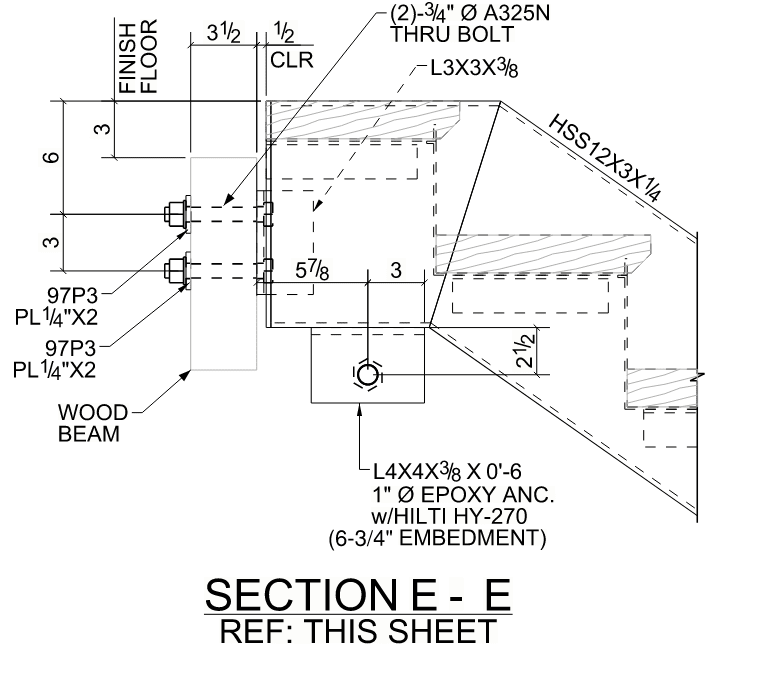SleeplessEngineer
Structural
I specified one bolt ledger to support this steel stringer, since there is not enough space to add another bolt (8" min distance reqd. at brick wall).
The steel stringer is also supported on the LVL beam through bolts. GC did not want to add bent plate to bear on it since they didn't want to disturb existing floor finish. Through bolt alone fails by wood bearing stress, so I added this seat angle which would be connected to brick wall. After the supplier produced the drawing per what I specified, I start having doubts on having just one bolt. Can someone be kind enough to share their views?

The steel stringer is also supported on the LVL beam through bolts. GC did not want to add bent plate to bear on it since they didn't want to disturb existing floor finish. Through bolt alone fails by wood bearing stress, so I added this seat angle which would be connected to brick wall. After the supplier produced the drawing per what I specified, I start having doubts on having just one bolt. Can someone be kind enough to share their views?


